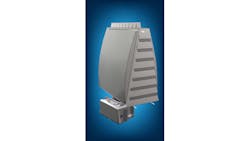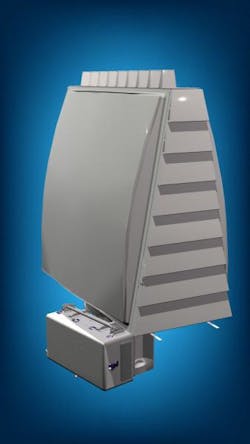Sea Radar System Detects Moving Targets While Avoiding Clutter
Produced by Northrop Grumman, the AN/SPQ-9B is an X-band, high-resolution, pulse Doppler, frequency-agile radar. The system comprises three below-deck cabinets (processor, receiver/exciter, and transmitter), a motor generator, and an above-deck, mechanically rotating, electronically stabilized antenna unit. The processor cabinet performs all logical, signal, processing, tracking, and interface functions. The receiver/exciter generates all necessary frequencies while receiving all antenna signals. For its part, the transmitter receives RF pulses from the receiver and amplifies them for antenna output.
The single antenna has been designed and tested for low-radar-cross-section reflectivity—a requirement for stealth ship designs. It provides 90 dB of clutter rejection in the air channel and 70 dB of clutter rejection in the surface channel, thus providing advanced sub-clutter visibility.
Specifically designed for use in the water, the radar scans out to the horizon and performs simultaneous and automatic air and surface target detection and tracking. It is capable of tracking everything from anti-ship cruise missiles (ASCMs), surface threats, and UAVs to low/slow-flying aircraft and helicopters. This latest series will be installed on the LPD-27, LHA-7, and DDG-79 ships.
About the Author
Iliza Sokol
Associate Digital Editor
Iliza joined the Penton Media group in 2013 after graduating from the Fashion Institute of Technology with a BS in Advertising and Marketing Communications. Prior to joining the staff, she worked at NYLON Magazine and a ghostwriting firm based in New York.

